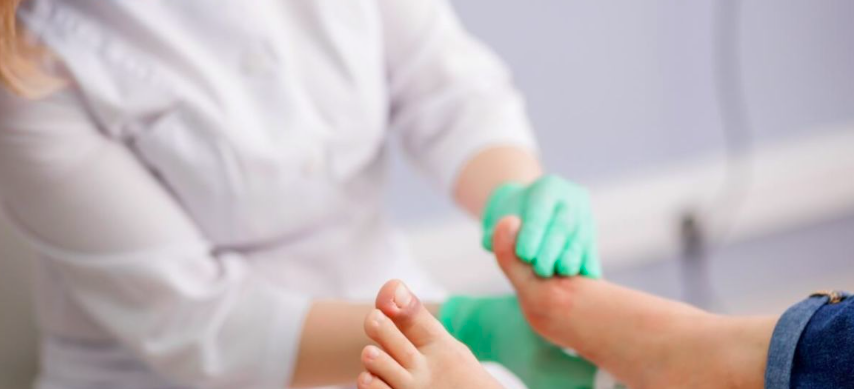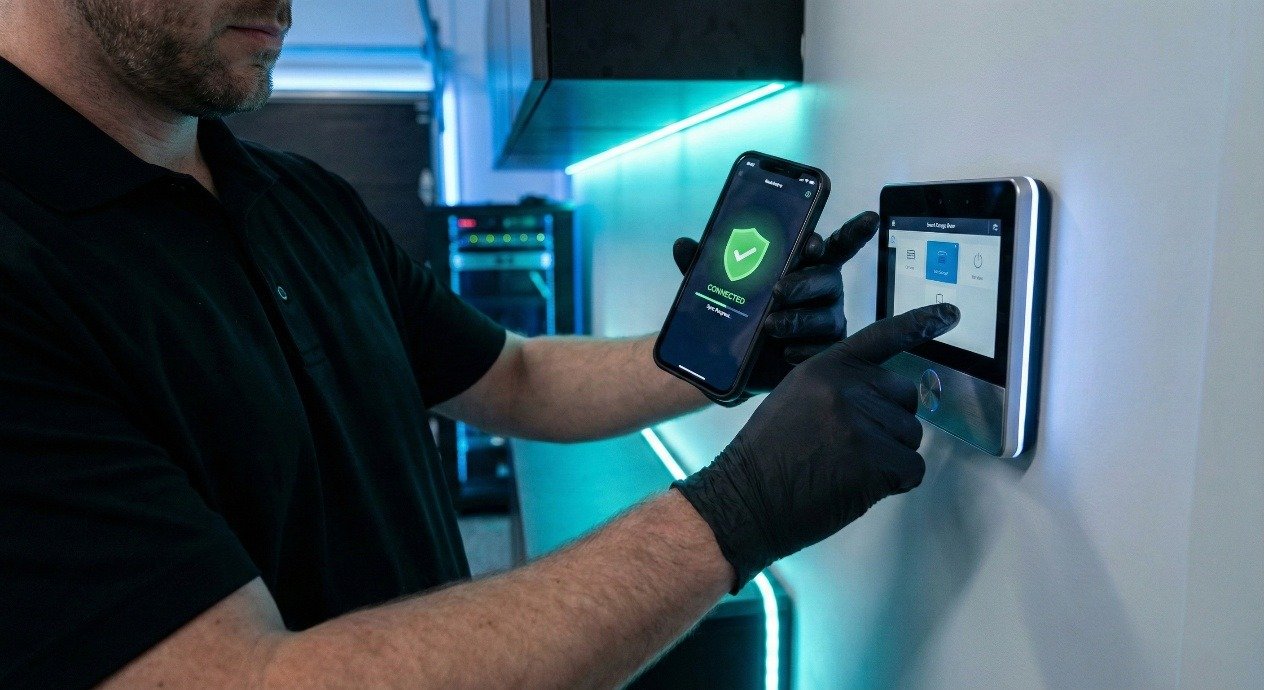If you’re living with diabetes, you know that even small cuts or sores can be a big worry. Wounds that might heal quickly for others can take much longer and need extra attention when you have diabetes.
This is because diabetes affects how your body heals, making you more vulnerable to infections and complications if wounds aren’t managed well.
That’s where proper wound care at home becomes so important. Here, we’ll walk you through best practices for caring for your wound that can help protect you or your loved one from these risks.
By the end of this article, you’ll have practical steps to handle wounds at home, helping you feel more secure and in control when dealing with any cuts, scrapes, or ulcers.
How Diabetes Affects Wound Healing?
Normally, when you get a cut or scrape, your body quickly works to repair the skin, fighting off any bacteria and sealing up the wound. However, diabetes can slow down this healing process in several ways.
One major reason is that diabetes can damage blood vessels over time, reducing the flow of blood to certain areas of the body, especially the feet.
Blood is essential for healing, as it transports nutrients and oxygen to tissues that need repair.
Without enough blood flow, wounds heal slowly, giving bacteria more time to cause infections.
Common Types of Wounds in Diabetic Patients
There are specific types of wounds that diabetic patients are more prone to.
Foot ulcers, for example, are common among people with diabetes. These are open sores or wounds that usually appear on the bottom of the feet.
Even a small cut or blister can become a foot ulcer if left untreated. Other types of wounds that often occur are slow-healing cuts or scrapes that seem to linger longer than they should.
The Increased Risk of Infection and Complications
Unfortunately, because these wounds take longer to heal, the risk of infection increases. If bacteria get into a wound that isn’t healing well, it can lead to serious complications. Infections spread quickly and, in severe cases, even lead to the need for amputation.
The Need for a Proactive Wound Care Plan
This is why having a proactive wound care plan is crucial for anyone with diabetes. A comprehensive approach to caring for wounds means treating wounds right away, keeping them clean, and regularly checking for signs of infection.
Essential Steps for Wound Care at Home
Caring for a wound at home prevents infections and promotes healing, especially when managing diabetes.
Here’s a step-by-step guide to help you handle wounds safely and effectively.
Step 1: Clean the Wound Properly
Use clean water to gently rinse the area, washing away any dirt or bacteria. A mild, unscented soap can help remove debris without irritating the skin.
Try not to use alcohol or hydrogen peroxide, which harm or dry out the skin.
Step 2: Apply an Appropriate Wound Dressing
Once the wound is clean, covering it with the right dressing helps protect it from germs and keeps it moist, which can speed up healing.
For diabetic patients, certain dressings work better than others. Non-stick gauze, hydrocolloid dressings, or silicone dressings are often good choices because they minimise the risk of further irritation.
Make sure to change the dressing as directed or whenever it gets dirty or damp.
Step 3: Monitor for Signs of Infection
Watch for indications of infection, such as redness, swelling, warmth, or discharge. If you notice any of these symptoms, it could mean that bacteria have entered the wound and are causing an infection.
Another sign to watch out for is if the wound becomes increasingly painful, even after some time has passed. Monitoring these changes can help you catch an infection early before it becomes serious.
Step 4: Control Blood Sugar Levels
High blood sugar can slow down the body’s natural healing process, making it easier for infections to develop.
Following your healthcare provider’s guidance on blood sugar management, including a balanced diet, regular exercise, and any prescribed medications, can make a big difference in how well your wounds heal.
Good glycemic control supports your immune system, giving your body the best chance to repair itself.
Step 5: Seek Professional Help When Necessary
Sometimes, despite your best efforts, a wound may not heal as expected. If you notice any warning signs—like increasing redness, unusual discharge, spreading infection, or worsening pain—it’s important to contact a healthcare provider.
Seeking professional help makes sure that the wound gets the medical attention it needs and helps you avoid more serious complications.
By following these important steps for wound care at home, you’re actively protecting yourself from potential complications and giving your body the best chance to heal.
5 Best Practices for Preventing Wounds in Diabetic Patients
Prevention is critical when managing wounds for those with diabetes.
Here are five essential practices to help reduce the risk of wounds and keep your skin healthy.
1. Inspect Your Feet Daily
Diabetic patients are especially prone to foot injuries due to reduced sensation in the feet, which makes it easy to overlook small cuts, blisters, or other issues.
Make it a habit to check your feet every day, ideally at night before bed. A mirror can help you see the bottoms of your feet, or you can ask a family member for aid.
2. Wear Proper Footwear
Shoes that fit well and offer protection can prevent accidental cuts, blisters, and pressure sores. Look for footwear that has a wide toe box, soft interiors, and good cushioning.
Avoid walking barefoot as it increases the risk of stepping on something sharp or rough that could cause a wound. Protective, comfortable footwear can make a big difference in keeping your feet safe.
3. Manage Dry Skin to Prevent Cracks
Keeping your skin moisturised, especially on your feet and lower legs, can help prevent cracks and peeling.
Use a gentle, unscented lotion after washing your feet, but avoid applying it between your toes, as this area needs to stay dry to avoid fungal infections.
Hydrated skin is more flexible and resilient, reducing the chance of wounds forming.
4. Keep Blood Sugar Levels Under Control
High blood sugar is known to harm nerves and blood vessels, impairing circulation and sensation in your feet.
Following your doctor’s recommendations for diet, exercise, and any necessary medication can help your body stay strong and heal more effectively if a wound occurs.
5. Trim Nails Carefully to Avoid Injuries
Long or improperly cut nails can cause scratches or injure surrounding skin, increasing the risk of wounds and infections. Trim your nails to avoid sharp edges, and be cautious not to cut too short.
If you have trouble seeing or reaching your feet, consider asking a podiatrist or family member for help.
Follow these best practices to take proactive steps to protect your skin, reduce the risk of wounds, and stay healthier in your daily life.
When to Seek Professional Help?
While managing wound care at home can go a long way, there are times when you may need professional help to make sure of proper healing and avoid serious complications.
Here’s when to consider reaching out to a healthcare provider:
Signs That Home Care May Not Be Enough
If a wound is not healing as expected, it’s essential to pay attention. Warning signs that may require professional care include:
- Persistent Pain: If the wound continues to hurt or the pain is worsening, it may indicate an underlying issue.
- Spreading Redness: Redness that extends beyond the wound’s edges or starts spreading up the foot or leg could be a sign of infection.
- Foul Odour: An unusual or bad smell from the wound area can indicate a bacterial infection that needs medical attention.
These signs can mean that bacteria have entered the wound and are causing an infection, which could lead to more severe problems if not addressed.
The Importance of Early Intervention
Without early care, infections can spread to deeper tissues and, in severe cases, require hospitalisation. In the worst-case scenario, untreated wounds can lead to the need for amputation. Seeking professional help promptly can stop an infection from worsening, allowing for treatments that support healing and keep you safe.
Final Words
You can prevent severe complications by regularly monitoring your wounds, following proper wound care at home, and reaching out for medical support when necessary.
Taking these steps empowers you to manage your health effectively, protecting yourself from serious outcomes and ensuring a healthier, safer future.





